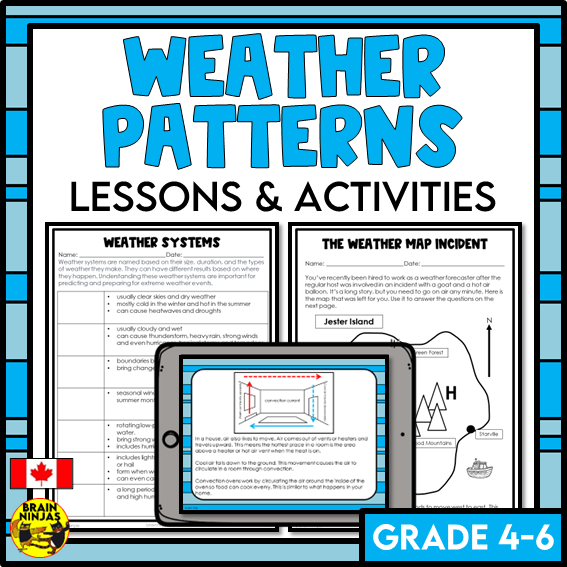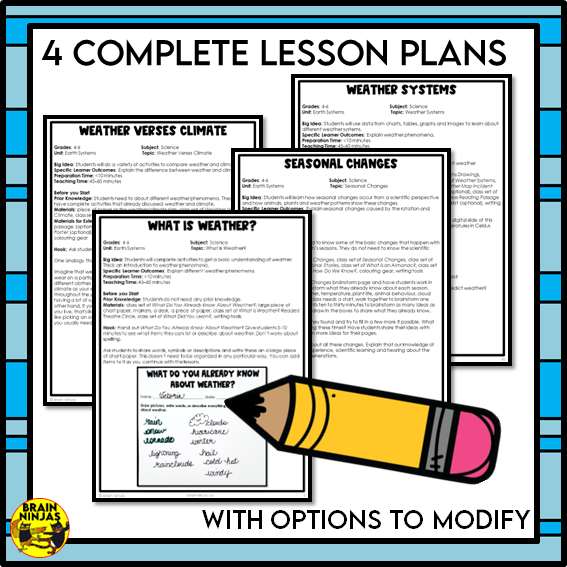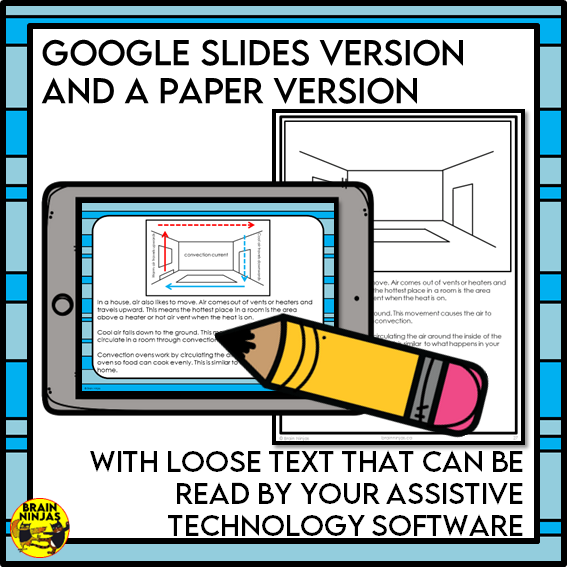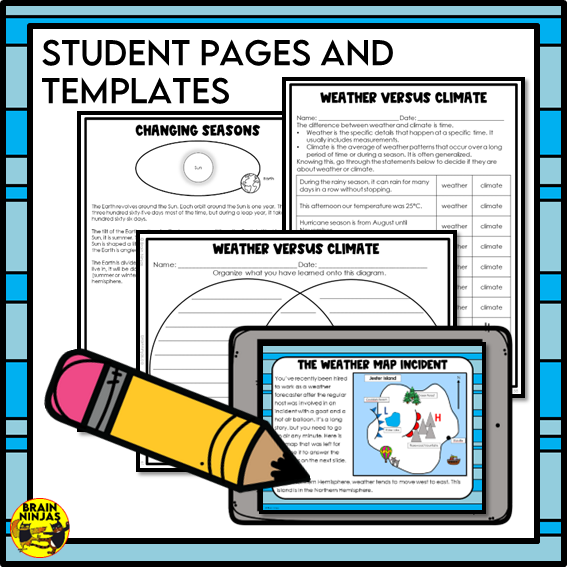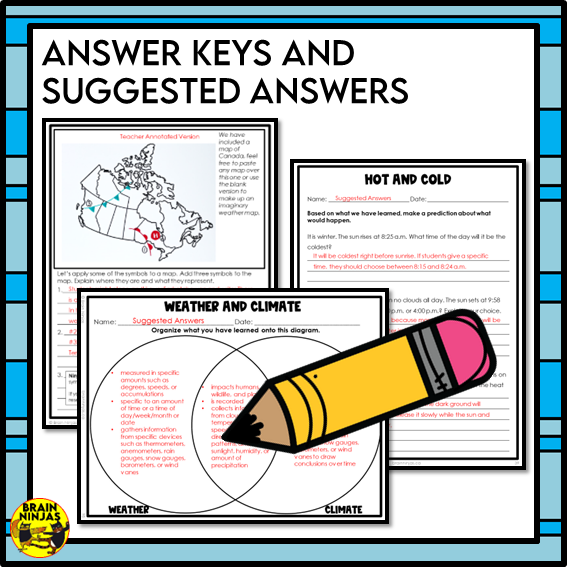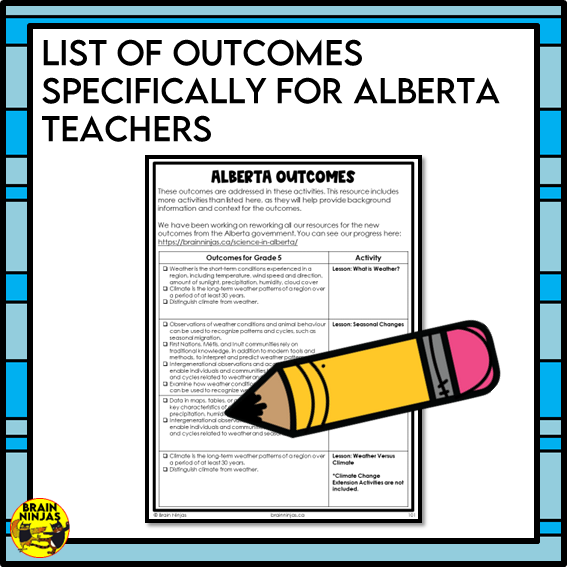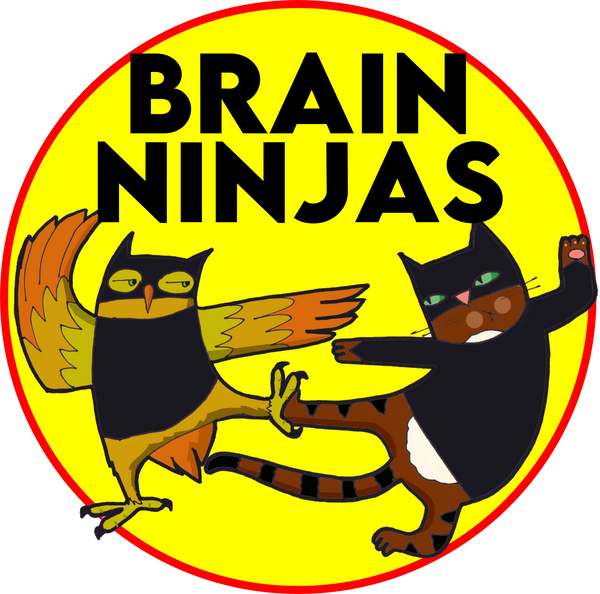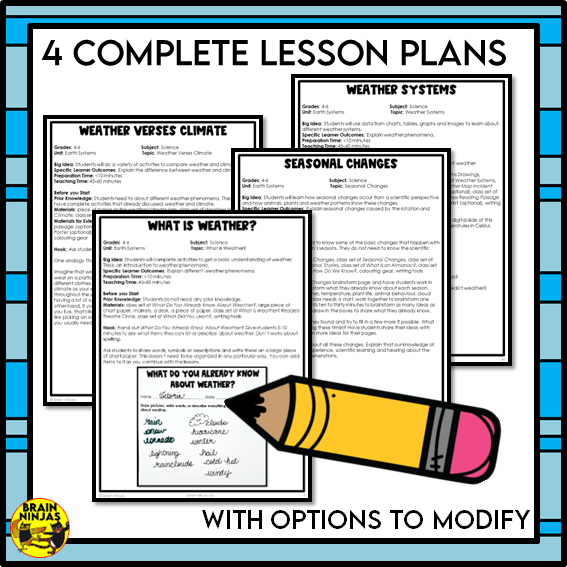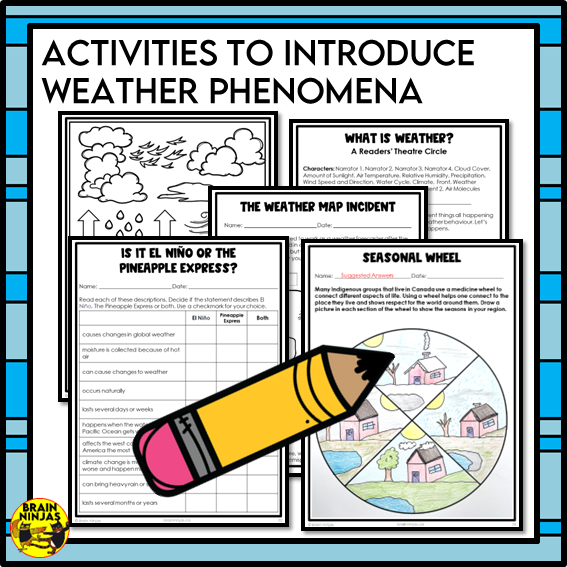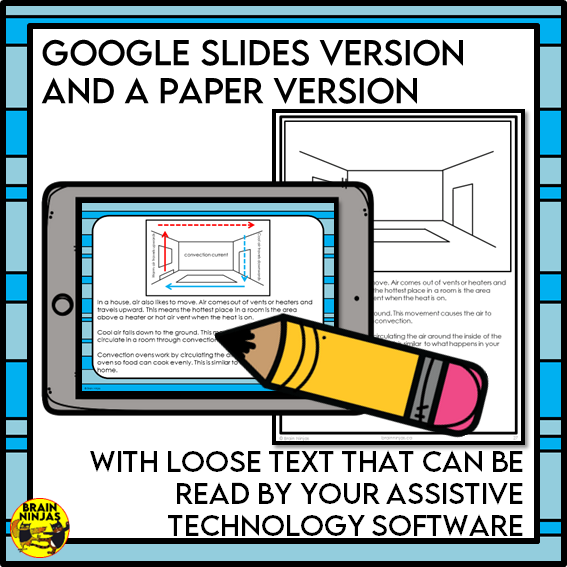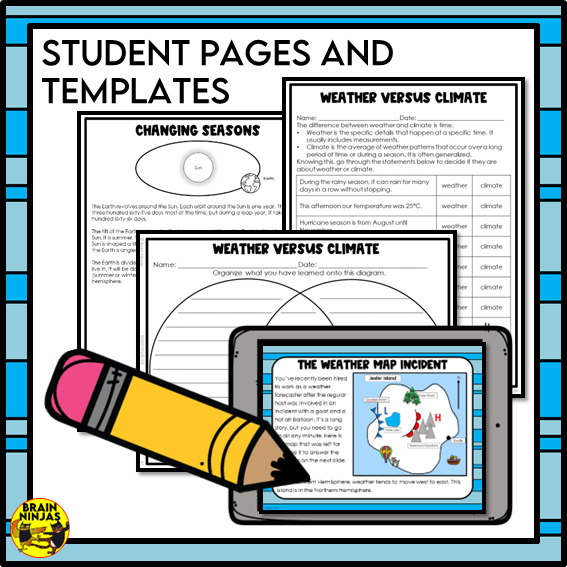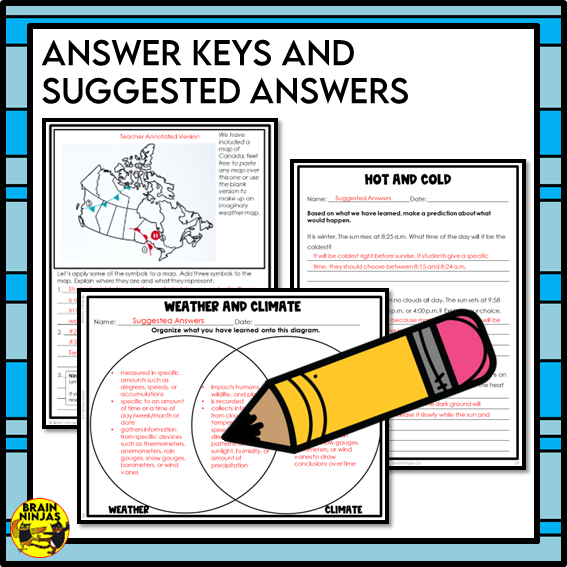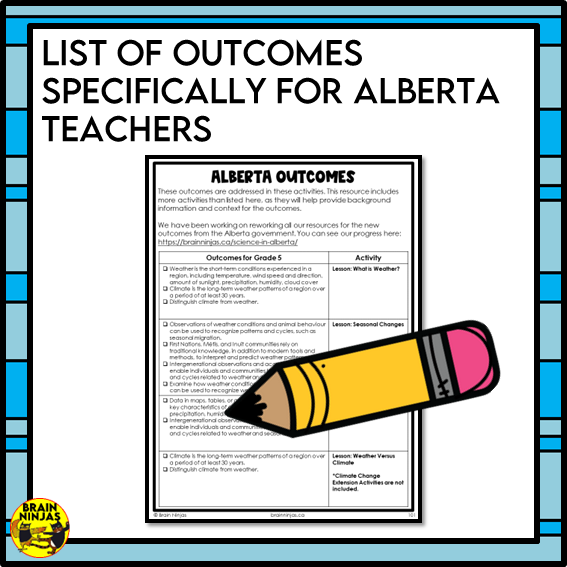Weather Patterns and Climate Lessons Paper and Digital
Weather Patterns and Climate Lessons Paper and Digital
Couldn't load pickup availability
Teach your students about weather patterns and climate with these activities that engage students, inform them and create no extra work for you. Some of the topics covered include climate change, seasonal changes, how air moves, low and high pressure, and how basic weather patterns are created.
This engaging resource includes:
- a Readers' Theatre activity script (a variety of reading levels are included in the script) to use as an introduction to weather.
- comprehension questions about weather phenomena.
- seasonal changes and how the rotation of Earth in the Solar System impacts seasons.
- how the position of the Sun impacts temperature.
- different ways to predict weather (modern and historical technologies).
- airflow and convection.
- differences between weather and climate.
- weather systems such as thunderstorms, blizzards, atmospheric rivers, polar vortexes, low-pressure systems, high-pressure systems, tornados, hurricanes, cyclones, droughts, floods, heatwaves, coldwaves, fronts, and so much more.
- weather symbols, maps and charts.
- reading passage comparing El Niño and The Pineapple Express.
- climate change and conservation.
- answer keys and suggested answers.
- background information for teachers.
- drawing activity.
- teacher annotated lesson plans and planning pages.
- student pages.
- photographs of student examples.
- a digital version of all the student pages that use Google Slides. You must download the PDF file and use the access link in the file to get your digital copy.
- an alignment guide for Alberta Outcomes.
This resource has been classroom-tested with several groups of different fifth-grade students. They really enjoyed the Readers' Theatre activity.
These lessons align with:
- Alberta Science Curriculum © 2022 Grade 5 (new outcomes)
These lessons support:
- any unit about weather.
Do you teach science in Alberta? We have science units for you!
Ninja Note: To access the digital version, download the PDF and use the link in that file.
Have a question? Before contacting us, check our Frequently Asked Questions page.
